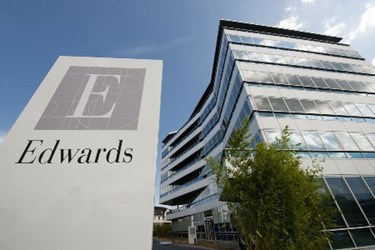Edwards CEO Lays Out Heart Valve Repair, Replacement Product Pipeline

Edwards Lifesciences hosted an investors’ day to lay out its long-term growth strategy and introduce products in their cardiovascular pipeline, particularly with valve repair and replacement. The company plans to introduce new therapies and expand indications for Edwards products currently on the market, investing “aggressively” in the research and development of “transformational” therapies, according to CEO Michael Mussallem.
At the conference, Edwards reported Q4 earnings on the lower end of its projected guidance, said Seeking Alpha. The steady adoption of transcatheter heart valve replacement (TAVR) therapies has dampened growth in the company’s surgical valve replacement division. Moving forward, the company expects to see between $3 and $3.4 billion in global 2017 sales, representing 10 to 14 percent underlying growth. Free cash flow is projected in the $575-650 million range.
“We expect another year of strong performance for Edwards Lifesciences in 2017, led by growth in sales of Sapien 3 and continued leadership in all our core businesses,” said Mussallem at the investors’ day. “We are projecting strong financial results next year while we continue to invest aggressively to provide breakthrough therapies for even more patients in need.”
Edwards has been steadily growing its TAVR business all year, which began with an expanded indication for the Sapien 3 device. On an earnings call in April, Mussellem commented that TAVR provides an “important and compelling therapy option for a large number of untreated patients” for whom open heart surgery is too dangerous. Expansion into the population of intermediate-risk patients is expected to “jump start” the TAVR market, and Mussellem remains pleased with TAVR growth despite a recent slowdown.
Larry Wood, corporate VP of Transcatheter Heart Valves at Edwards, explained in his remarks that “indication expansion, technology advances, and therapy awareness” continue to be primary growth drivers of TAVR technology. Global market opportunity for TAVR is projected to reach $5 billion by 2021, and Edwards is investing “aggressively” in R&D to generate therapies that will be transformational in the space, said Wood.
In 2017, Edwards expects a CE mark for Sapien 3 Ultra System and the Edwards Centera Valve System, both indicated for transcatheter aortic valve implantation (TAVI) procedures. Edwards is also planning to launch a clinical trial next year to expand TAVR therapy to treat asymptomatic patients with severe aortic stenosis.
In its structural heart division, Edwards also has several promising therapies for mitral and tricuspid regurgitation in the works, but these remain in early clinical development. The Pascal transcatheter mitral valve repair system is ready for CE Mark study in 2017, and overall the year promises to be a “pivotal year of additional clinical experience,” according to a highlight report by Seeking Alpha.
In November, Edwards seized the opportunity to further expand its valve portfolio with the acquisition of Valtech, an Israeli med tech specializing in transcatheter mitral and tricuspid valve repair and replacement.
“We recognize that physicians will likely need a toolbox of options to treat their patients most effectively,” said Mussellem in a recent press release. “We are very pleased with the progress and future prospects of the multiple internal programs we have underway.”
